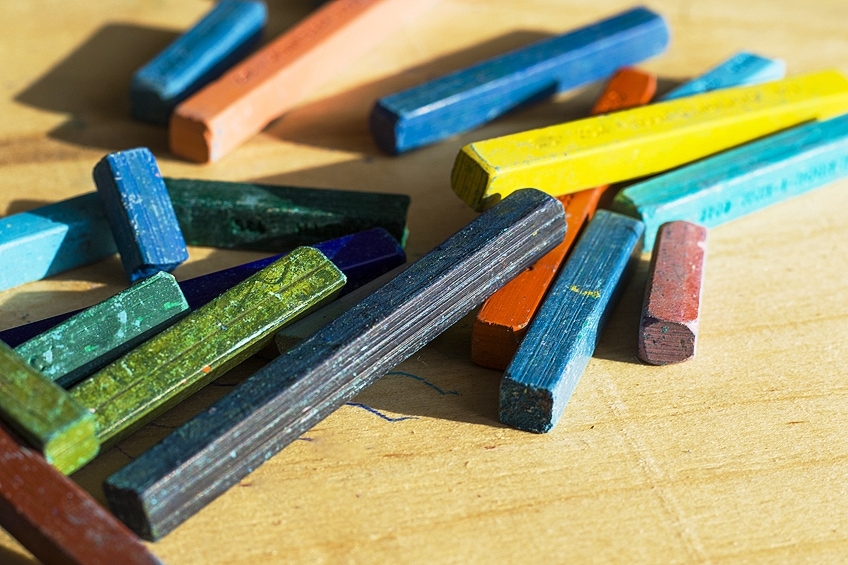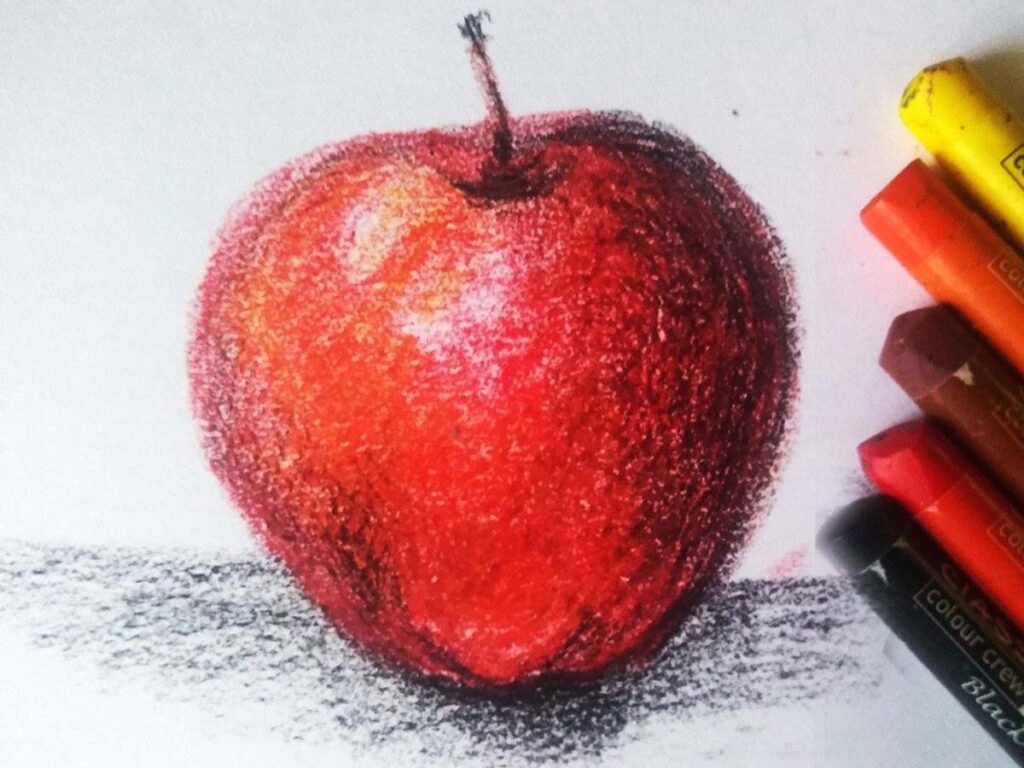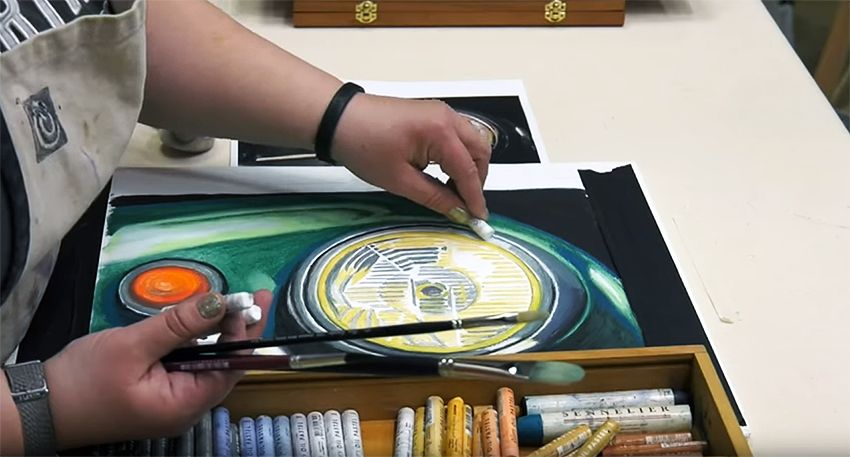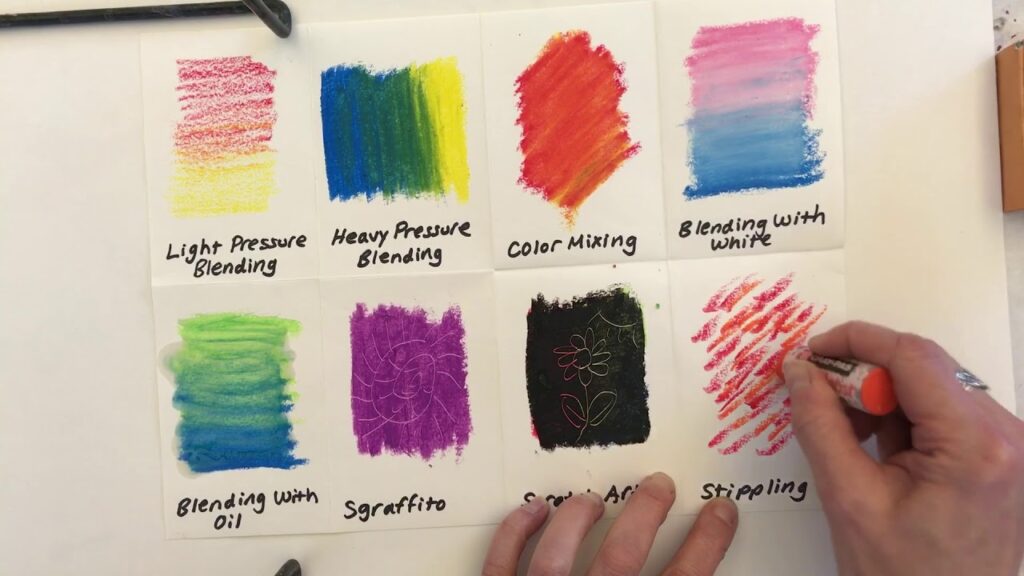Oil pastel techniques and tips
As a kid, I remember thinking oil pastels were the hardest drawing medium.
These crayons seemed to be hard to blend and would crumble easily. They would leave stains on my finger in places where they were not supposed to be. On top of that, they could get dirty quickly but in the end you could prepare your diy donut crayon craft for yourself using these easily in less time.
Even as a child, I would find using watercolors immensely challenging. I remember choosing them more wholeheartedly than even these familiar-looking crayons.
Back in those days, I would not believe my art teacher who kept trying to prove to me how simple and judicial oil pastels could be used.
It indeed takes years of practice with this medium to get to a point where art becomes easy and creation becomes fun. The journey is indeed worth it every step of the way.
What makes oil pastels a great medium?
Most well-versed artists – including my long-suffering art teacher – swear by the finishing quality and usefulness of oil pastels. Some go on as far as to say that using oil pastels is a better option than any other professional medium.
To a beginner in this field, however, it might feel like the exact opposite. In which case the question begs itself – what makes oil pastels a great medium?
Oil pastels are simply what their name suggests. They are an assortment of pastel coloring mediums that use oil as their base. Unlike other well-known oil-based painting mediums.
However, modern oil pastels do not require a palette or numerous tools like brushes or knives. Although oil pastels do require certain coloring tools for scraping and mixing, they are still stick-like structures. These are super easy to use in comparison to other oil-based paints which makes them one the ideal choice of paint for paper Mache art and craft pieces.

On the other hand, these stick-like structures are the reason why they can get dirty so quickly.
Oil pastels are very sensitive crayons. Yet there used widely to produce creations that can only achieve that level of professionalism or finishing quality.
What are the advantages of using oil pastels?
We are yet to look at the benefits of using oil pastels over anything else that the artistry market can offer to you.
They do not require the addition of water or oil base
Traditional paint mediums are well known for needing oil or water as a base to perform on canvas. Even highly versatile painting options like acrylic or enamel, still require a certain base to be applied on the canvas.
The application of the base is either water or oil. It is something that the student has to learn separately since the quantity and method of application of this base determines how your paint will perform on the surface. With oil pastels, all you need is the oil pastel stick itself. All these other concerns vanish in the spur of a moment.
They do not require extra time to cure
Paint mediums like oil acrylic or watercolor require a considerable time to cure. The shortest time that these paint mediums can ever cure is 2 to 3 days.
For oil pastels, however, unless you are producing very high-quality paintings. The curing process can be said to be instant since the entire painting is complete the moment you apply the last stroke. There are of course extra techniques and paint equipment you can use to produce a painting of better grade quality.
Oil pastels are not toxic
Most paint mediums including acrylic are toxic to a certain extent. Oil pastel on the other hand is not toxic at all. They are simple crayon-like structures that are even better than other plastic crayon variations on this toxicity front.
This is another of the many reasons why oil pastels are great options for children to start learning about the basics of creating artistic content. Of course, if the child desires, they can continue using this medium all their lives without facing any problems.
Oil pastels provide coverage quickly
Oil pastels are very fast. They provide opaque coverage at the very first stroke. Their coverage is quick and masterful on any surface. By knowing a few simple tips, tricks, and techniques, variations in these levels of coverage can be achieved easily by the artist.
It is even possible to easily mix oil pastels with other paint media to create mixed medium art or just simply better coverage results. Oil pastels are great for beginners still learning about coverage.
They teach vital artistry skills to young children
Oil pastels can teach vital objectives and methods of achieving the desired results in painting to children quite easily.
Different quite overlook but important technical skills in the world of art like shading, blending, texturing, and learning the usage of extra tools like scrapers and knives – it turns out the learning benefits that a child can achieve from using oil pastels are quite endless.

Your most important tool is your hand
For oil pastels, the most important thing a student has to learn is how to blend with their hand. Blending with one’s hand can seem to be such a messy and dirty process.
The first few artistic creations you will double with using your oil pastel set will indeed seem like the most rugged and hacked paintings you have ever made. But with time students learn how to use their hands masterfully or other simple tools like cotton or blending paper to achieve professional-grade results.
if pastel color gets stick to your hands then you can remove it by washing with soap but if spray paint gets stick to your hands then you need to follow some simple methods for its removal shared here for clean hands in no time.

Oil pastels are so affordable
Oil pastels are super affordable in comparison to any other paint medium of similar production quality. Not only are the sets affordable themselves but you also do not need to invest in a variety of different tools as you would in the case of traditional paints.
This makes painting with oil pastels the most cost-effective option for beginner-level artists. But cannot afford to invest in professional-grade brushes and other tools.
Oil pastels give great color
Oil pastels provide a variety of highly vibrant pigmentation and textures. It differs from each other in how well they blend or stand out on the painted surface. But all such different varieties have one thing in common – they are all great at producing rich and luminous colors on the painted surface.
The artist can further mix different shades or even oil pastel varieties to increase this vibrance. While oil pastels show every benefit of an oil-based painting medium, they require the artist to use the whites on the surface as simply as a watercolor artist would use it.
Apart from the ones listed above, two more highly popular advantages of oil pastels warrant their use everywhere. This is the ability to use oil pastels to produce a variety of textures. And this results in using different techniques and the fact that oil pastels can be used on so many different surfaces. We will be talking about these two benefits in detail in a later segment.
The three types of oil pastels
The three major kinds of oil pastels that you can find in the market and choose from are oil pastels, wax crayons, and pastel sticks.
Oil pastels
Oil pastels are non-drying pastel sticks that provide the smoothest consistency of the three. They are the best for large-scale applications. They are non-drying. Oil pastels are versatile and can be purchased for a variety of surfaces that are not paper.
Wax crayons
The binder base of wax crayons relies solely on wax and has no oil whatsoever. They have a waxy texture and are relatively harder to mix on the canvas. Wax crayons only work on paper.
Pastel sticks
Pastel sticks are artificially manufactured oil pastels. They are powdery in consistency and are mostly used to define the finer regions. They use gum or methyl cellulose binder and are great blenders.
Every popular oil pastel technique that you should know
It is now time to look at some wonderful oil pastel painting techniques that you can never go wrong with even as a beginner. All you need to master oil pastels is consistent self-inspection and the inability to stop practicing.

Overlaying
This simply refers to layering oil pastels one over the other. This will give you a full surface of coverage where shading and blending are achieved by using the secondary shades on top of the primary ones. With oil pastels, you can apply as many secondary layers as you want until the desired color is achieved.
Scumbling
Scumbling refers to the short strokes that you can apply using your oil pastels on the surface. These strokes can be in several ways, mostly different types of controlled scribble marks.
You can choose what kind of marks you want to apply on your surface. Many artists develop their own unconventional scribbling tactics over long periods of learning.
Blending with oil
Liquefication of oil pastels is possible and is even used a number of times by different artists to use oil pastels as paint. This depends on the amount of oil that you are blending your pastels with. Have fun with this technique until you reach what you want.
On the other hand, you can use a very little amount of oil to create a smooth blending without turning your pastels into the paint.
Sgraffito
This refers to the usage of contrasting colors side by side to give them complementary values. To do this the artist uses different colored pastels starting from the lighter shade and moving on to the darker color. At this point, you can use the tip of a knife or a scraper to scrape designs out of this pastel creation.
Masking
Masking simply means covering a part of your paper with masking tape to make sure no color makes way into that segment of your painting surface. Mostly this can be used to provide an aesthetic boundary to your work, but many artists also use it to create different patterns. You can also choose draft tape to do this.
Dotting
Dotting is probably one of the most strikingly beautiful techniques used by artists of oil pastels to create their paintings. It is work that requires a lot of time. But is super relaxing and involves an artist consistently producing a texture of dots to create their painting.
For this, the tip of the oil pastel is sharpened and used gently to work towards giving the painting proper shape.
Impasto
This technique is used to produce a painting that looks very similar to anything created using the traditional oil paint medium. This involves starting out using broad colorations which are blended into a paste.
Details on top are gently produced using the softest of oil pastels in a way that resembles the details produced by oil paint with knives or brushes.
Scratching
Using the scraper, you can define your painting or blend it even more thoroughly by removing the non-drying top layer which will be providing the most exposure to dust and pigmentation and at the same time unwanted texture.
Scratching tools are usually provided with the oil pastel set that you buy. Although you can always invest in professional-grade scrapers.
Using your surface to your benefit
Almost every artist, no matter what paint medium they use, knows how to use their chosen painting surface to their benefit. Using yourself is to your benefit. Also, can give you just the texture and exposure you want your oil pastels to provide to your overall painting.
How to purchase the perfect set of oil pastels?
An additional benefit to using oil pastels that we did not talk of before, is the variety of options and types of pastels that you can choose from. More importantly, other than a few very high-end brands almost all of them are equally affordable. Choose your oil pastels depending on
Do you want soft pastels or textured pastels?
There are different products in the market branded as supersoft pastels or pastors which will provide some texture to your work. Choose the one that is right for you.
Student grade vs artist grade pastels
Even as an advanced student or a beginner who wants to work on oil pastels professionally it is good to purchase artist-grade pastels. Artist-grade pastels are better quality and quite affordable in comparison to other artist-grade paint mediums.
Your budget
Of course, a great thing factoring into the buying process is your personal budget. There are great quality oil pastels sold at minimal cost, so do some research and try not to exceed your budget without compromising on quality.
Conclusion
Using oil pastels can definitely be a step towards doing something new for yourself from an artist’s perspective. It is a surely known thing among people who are once beginners that it takes a little time to fall in love with oil pastels. Be patient and keep painting!

FAQ
What kind of oil pastels should I use for the impasto effect?
You should go for the softest and smoothest set of oil pastels that you can find to create a painting using the impasto technique.
Can I master the dotting technique using student-grade oil pastels?
Because of their qualities, student-grade oil pastels can be a little harder to sharpen or use as dots. But even this with practice can be mustard and you do not need to invest in an artist quality pack yet.
Can I mix student-grade oil pastels with artist-quality oil pastels?
Mixing oil pastels with artist-quality oil pastels is a wonderful way to get the best quality results without incurring high levels of cost.

Being associated with art and craft field since decades as a hobbyist and life long learner has given me an opportunity to learn many new things related to art, craft, paints and pottery which i am trying to share with your guys on this website. I have expertise of being professional painter and potter for the last 20+ years
I have learned mind blowing cool tips and insights which makes me a person with ability to improvise and come up with creative ideas and solutions to make stunning and impeccable art pieces of all types which are adored by people across the globe on this website and other platform.


